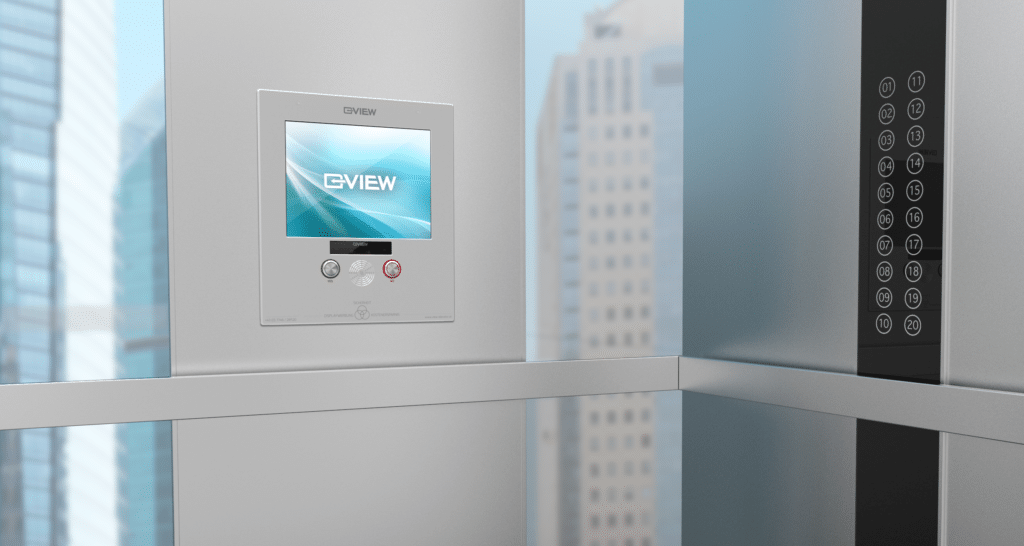Emergency detection
“View Sense” uses “AI” for the early detection of suspicious or critical situations. The system pays attention to defined movement patterns and provides information about suspicious and critical processes. It automatically detects medical emergencies such as loss of consciousness if a person is harassed in the cabin or unaccompanied objects are left in the cabin.
Artificial intelligence based on an image matching algorithm works in the background. Maintenance functions for elevator operators and maintenance companies can also be activated to check technical conditions. This includes, for example, door zone monitoring and parking accuracy as well as vandalism detection.
As soon as a situation is suspicious or critical, the assigned emergency call center is notified.
Using the camera-based emergency detection “View Eye”, the staff at the emergency call center can assess the situation in the cabin if people do not react after the emergency call has been triggered. Since “imminent danger” is to be assumed in this case, the event-related camera activation is harmless in terms of data protection law, emphasizes the company.
Detect emergencies automatically
Non-binding inquiriesVIEW Elevator relies on edge computing
Edge computing will become an indispensable key technology for the IoT in the future. VIEW Elevator has been using this key technology in the development of its smart elevator emergency call and communication platform since 2015.
Analysts agree: the volume of data will explode in the next ten years. As early as 2025, the amount of new data is expected to exceed 163 zettabytes, an equivalent of 16 billion of today’s 12 TB HDDs.
At the same time, the real-time relevance of new data is growing even faster than the amount of data itself. The combination of both – data volume and low latency times – is suitable for bringing the conventional computing model to its knees.

With edge computing, data is processed decentrally in the network periphery – at the place where it was generated. The importance of technology increases with the amount of data generated by the Internet of Things.
With VIEW, data is only transferred to the cloud when a defined critical condition has been recognized in the system. The transmitted data then serve to avert a specific danger or to request operationally important technical interventions.
For this purpose, VIEW’s edge computing systems differentiate between “throwaway data” and “critical” or “hypercritical” data. The VIEW Sense TM Devices produce large amounts of data with their sensors. The majority of this information, however, is “disposable data”, characterized by minimal or even no potential for later reuse. The IoT device needs this data in real time for immediate decision-making – but not afterwards.
VIEW’s Edge Computing pre-sorts this data in real time and at the point of origin. After the first analysis, it deletes real-time-relevant data and only forwards the knowledge derived from it to the server or the cloud. You can still benefit from them later. Edge computing helps to relieve conventional computing systems and ensures the low latency times that are so important for the IoT.
In connection with the image analysis method developed for VIEW Sense, another aspect of data protection arises. Hannes SCHOBER, CEO and Founder of VIEW: “Thanks to Edge Computing, the prioritization of the data transfer can take place right where the action is and therefore in real time with only minimal network load. In this way, we ensure that the costs for data transmission are kept low and, with regard to data protection, data are only transmitted when dangers or risks have to be averted.